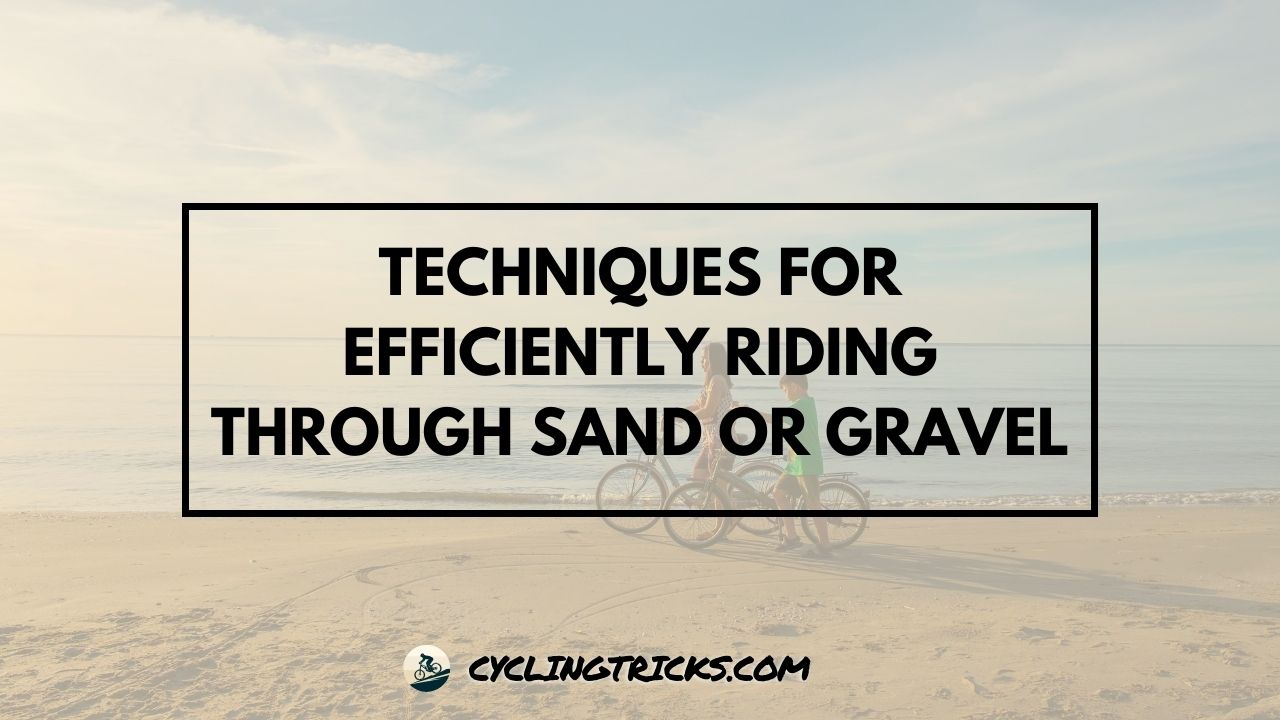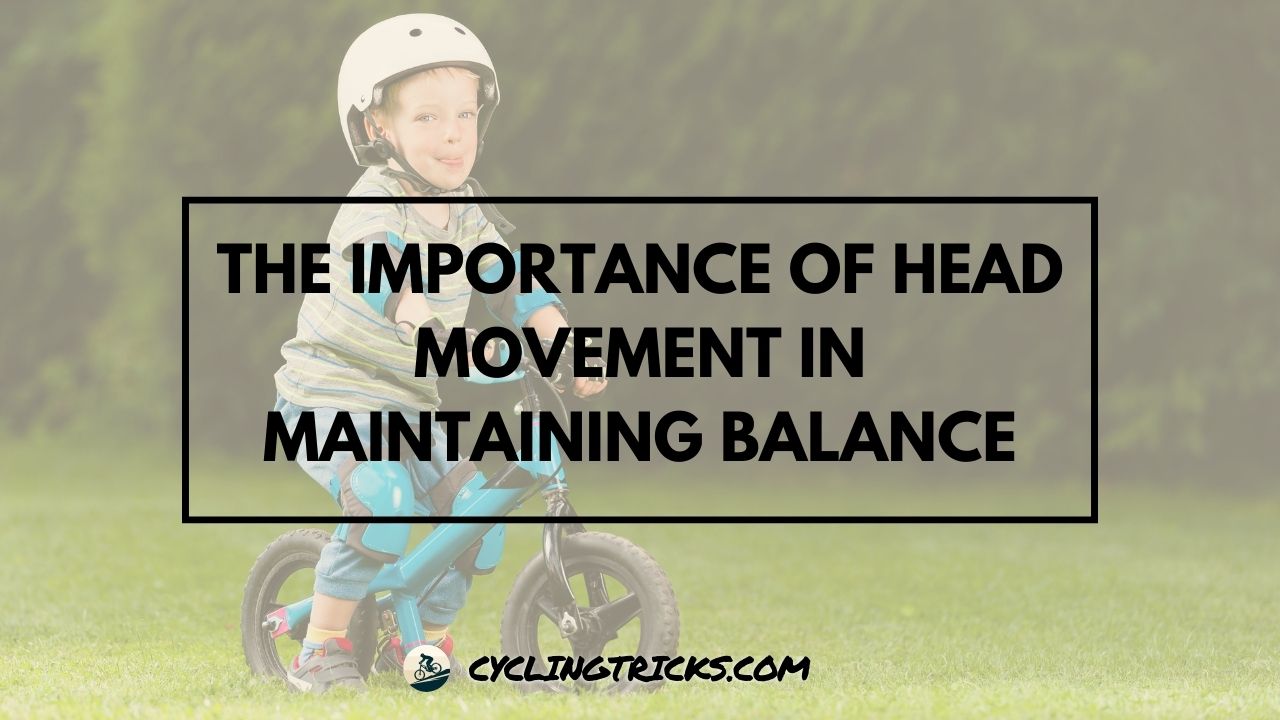Did you know that the way you ride on sand or gravel can significantly impact your off-road biking experience? Whether you’re a seasoned rider or a beginner looking to explore challenging terrains, mastering the right techniques is essential for efficient and enjoyable rides.
In this article, I will share valuable off-road biking tips and techniques that will help you navigate through sandy or gravelly trails with ease.
From body positioning and tire pressure adjustments to maintaining momentum and reading the terrain, these techniques will enhance your control and confidence, allowing you to conquer any off-road adventure.
Key Takeaways:
- Master body positioning to maintain balance and navigate through unstable surfaces like sand and gravel.
- Adjust tire pressure to maximize traction and stability, ensuring a smoother ride over challenging terrain.
- Choose the right gear ratio to power through loose surfaces more efficiently.
- Maintain momentum to overcome sandy or gravelly sections and prevent getting stuck.
- Implement proper steering and cornering techniques to maintain control and stability.
Mastering Body Positioning
When it comes to riding on unstable surfaces like sand or gravel, mastering body positioning is essential for maintaining control and maneuverability.
By distributing your weight, maintaining balance, and utilizing proper body movements, you can navigate through loose terrain with ease, improving your sand riding technique and gravel riding skills.
One of the key techniques for riding on sand or gravel is to position your body in a way that optimizes stability and control. Here are some sand riding tips and gravel riding techniques to help you master body positioning:
- Distribute your weight: By shifting your weight towards the rear of the bike, you can maintain traction on the rear wheel, preventing it from slipping. This technique is particularly effective when climbing uphill on loose surfaces.
- Maintain a balanced stance: Keep your body centered over the bike, with your arms and legs slightly bent. This stance allows you to absorb the terrain’s bumps and vibrations, enhancing your stability and control.
- Use proper body movements: When riding on sand or gravel, it’s important to stay loose and agile. Shift your body weight forward or backward as needed, based on the terrain’s conditions. This will help you maintain traction and adapt to the ever-changing surface.
Remember, practicing these body positioning techniques is crucial to becoming a more confident and capable rider. Experiment with different positions and movements to find what works best for you and always remain alert and adaptable to the terrain.
“Proper body positioning is the foundation of riding effectively on any surface. By mastering this technique, riders can overcome the challenges of sand and gravel, ensuring a smoother and more enjoyable off-road experience.” – Emily Johnson, Professional Mountain Biker
| Benefits of Mastering Body Positioning | Sand Riding Tips | Gravel Riding Techniques |
|---|---|---|
| Enhanced control and stability | Distribute your weight | Maintain a balanced stance |
| Improved maneuverability | Maintain balance | Use proper body movements |
| Increase in confidence | Adapt to terrain conditions | – |
Mastering body positioning is a fundamental skill that will greatly enhance your off-road riding experience on sand and gravel.
By following these sand riding tips and gravel riding techniques, you’ll be able to confidently navigate through difficult terrains and enjoy the thrill of off-road biking to the fullest.
Adjusting Tire Pressure for Improved Performance
Riding through sandy terrain or loose surfaces, such as gravel, requires careful consideration of your tire pressure. By adjusting the tire pressure, you can maximize traction and stability, ensuring a smoother and more controlled ride over challenging surfaces.
When navigating sandy terrain, it’s essential to reduce tire pressure. Lowering the pressure allows the tires to spread out, increasing the contact patch and providing better flotation. This helps prevent the tires from sinking into the sand, allowing you to maintain momentum and maneuverability.
“Lowering tire pressure when riding through sand is like floating on top of the surface instead of sinking into it. It’s a game-changer.”
On the other hand, when riding on loose gravel, slightly higher tire pressure may be beneficial. Increasing the pressure helps prevent the tires from sinking into the loose surface and improves overall traction. It also reduces the risk of punctures and helps maintain stability while navigating through challenging gravelly sections.
To determine the ideal tire pressure for your specific riding conditions, consider factors such as the type of terrain, your weight, and the tire width. Experiment with different pressures within the recommended range provided by the tire manufacturer to find the setting that works best for you.
Recommended Tire Pressure ranges for Different Terrains
| Terrain | Front Tire Pressure Range (psi) | Rear Tire Pressure Range (psi) |
|---|---|---|
| Sand | 10-15 | 12-18 |
| Gravel | 25-30 | 28-35 |
“Optimal tire pressure can greatly improve your riding experience on sandy terrain or loose gravel.”
Remember, adjusting tire pressure is not a one-size-fits-all solution. It’s important to regularly check and fine-tune the pressure based on the specific conditions and terrain you’re riding on.
By finding the right tire pressure for each ride, you’ll enhance your overall performance, maintain control, and have a more enjoyable off-road biking experience.
Bike Tire Pressure Calculator
Easily optimize your bike ride with our Bike Tire Pressure Calculator.
Just share a bit about your bike and preferences and let us calculate your tire pressure.
Choosing the Right Gear Ratio
Selecting the appropriate gear ratio is crucial for improving your gravel riding skills and sand riding techniques. When riding on challenging terrain like sand or gravel, having the right gear ratio can make a world of difference in your performance and efficiency.
So, what exactly is gear ratio? In simple terms, it refers to the relationship between the number of teeth on the front chainring and the rear cassette. A higher gear ratio means more power and speed, while a lower gear ratio offers better climbing ability and control.
When riding on loose surfaces, such as sand or gravel, it’s essential to find the right balance between power, control, and traction. Here are some gear selection strategies to help you power through these terrains more efficiently:
- Consider the terrain: Analyze the type of sand or gravel you’ll be riding on. Is it deep and soft, or compacted and hard? This will help you determine whether you need a higher or lower gear ratio. For deep and soft sand or gravel, a lower gear ratio provides better traction and prevents wheel slippage. In contrast, a higher gear ratio may be more suitable for compacted surfaces.
- Experiment with gear combinations: Different gear combinations offer various advantages in different terrains. Try out different combinations to find the sweet spot that allows you to maintain a steady cadence and power through the sand or gravel. Remember, it’s all about finding the right balance between pedal effort and wheel traction.
- Adapt to the conditions: As you ride through sand or gravel, the terrain may change. Stay adaptable and be prepared to adjust your gear ratio accordingly. For example, if you encounter an uphill section, switching to a lower gear ratio will provide better climbing power. Conversely, if you’re riding on a flat stretch, a higher gear ratio may help you maintain momentum.
In the words of professional off-road rider, Alex Dawson: “Choosing the right gear ratio is like having the perfect tool for the job. It gives you the power and control you need to conquer even the toughest sand or gravel sections.”
Being mindful of your gear selection and adapting to the terrain will significantly enhance your gravel riding skills and sand riding techniques. Remember to experiment, find your optimal gear combinations, and enjoy the thrill of conquering these challenging off-road surfaces.
Sand Riding Gear Ratios Comparison
| Gear Ratio | Advantages | Disadvantages |
|---|---|---|
| Low Ratio (e.g., 28/34) | Provides excellent traction | Less top-end speed |
| Mid Ratio (e.g., 32/36) | Offers a balance between traction and speed | May require more effort on steep climbs |
| High Ratio (e.g., 34/40) | Provides faster speeds | Reduced traction in loose conditions |
When it comes to gear ratios for sand riding, there’s no one-size-fits-all solution. The right gear ratio for you will depend on your riding style, fitness level, and the specific sand or gravel conditions you encounter.
Use the table above as a starting point to understand the advantages and disadvantages of different gear ratios, but don’t hesitate to experiment and find what works best for you.
Now that you have a better understanding of how gear ratios can impact your gravel riding skills and sand riding techniques, it’s time to hit the trails and put your knowledge into practice.
Experiment with different gear combinations, adapt to the changing terrain, and enjoy the freedom and excitement of riding through sand or gravel with confidence.
Bike Gear Ratio Calculator
Optimize your cycling adventure with our Bike Gear Ratio Calculator.
Effortlessly find the perfect gear setup for your ride, tailored to your bike type, terrain, and experience level.
Maintaining Momentum
When it comes to off-road biking, maintaining momentum is crucial for conquering sandy or gravelly sections with ease. By keeping your speed and flow, you can navigate through challenging terrain without getting stuck. Here are some tips to help you maintain momentum and improve your performance on sand and gravel:
1. Choose the Right Gear
Make sure you’re in the appropriate gear for the specific terrain. Lower gears provide more torque and power, allowing you to pedal through soft sand or loose gravel more efficiently.
2. Stay Light on the Bike
Shift your weight back slightly to maintain traction on the rear wheel. This will prevent the front wheel from digging into the sand or gravel and help you maintain your forward momentum.
3. Pedal Smoothly
Avoid sudden bursts of pedaling or hard stops. Instead, pedal smoothly and consistently, applying steady pressure to the pedals. This will help you maintain your speed and prevent any sudden loss of momentum.
“Maintaining momentum is key for riding through sandy or gravelly terrain. By applying these tips, you can keep your speed and flow, avoiding unnecessary stops and improving your overall performance.” – Professional Off-Road Biker
By following these techniques, you’ll be able to navigate through sandy or gravelly sections more effectively, improving your off-road biking skills. Practice these strategies and soon you’ll be confidently tackling any challenging terrain that comes your way.
Steering and Cornering Techniques
When it comes to riding through sand or gravel, mastering steering and cornering techniques is essential. These skills will help you maintain control and stability, enabling you to navigate tight corners and unpredictable terrain with confidence.
Here are some sand riding tips and gravel riding techniques that can enhance your performance:
1. Look Ahead
Keep your eyes focused on the path ahead. By looking ahead, you can anticipate upcoming obstacles, adjust your line, and choose the best path to tackle corners effectively.
2. Lean with Confidence
When approaching a corner, shift your body weight towards the inside of the turn by leaning your bike. This action will help you maintain grip and stability, reducing the risk of skidding or sliding.
3. Smooth and Gradual Turns
Avoid sudden and aggressive steering inputs. Instead, make smooth and gradual turns to maintain traction and control. Gradually lean your bike into the corner, allowing the tires to grip the surface.
4. Feather the Throttle
As you exit a corner, gently roll on the throttle to regain momentum. Feathering the throttle prevents the rear wheel from spinning excessively and helps you maintain control while transitioning out of the turn.
5. Adjust Your Line
Be prepared to adjust your line mid-corner if needed. Sand and gravel can be unpredictable, so it’s crucial to have the flexibility to adapt to changing conditions. Keep your body loose and ready to make quick adjustments as necessary.
By practicing these steering and cornering techniques, you’ll become more adept at navigating sandy and gravelly terrains. Take your time to build confidence in these skills, and soon you’ll be tackling any corner with ease.
Braking and Acceleration Strategies
When it comes to off-road biking, knowing how to brake and accelerate effectively is essential, especially when riding on loose surfaces like gravel.
These skills will give you the control and confidence needed to navigate challenging terrains. In this section, I’ll share some techniques to optimize your braking and acceleration, ensuring a smooth and safe ride.
Braking Techniques
Applying the brakes correctly can prevent skidding and help maintain balance on loose surfaces. Here are a few tips:
- Feather the brakes: Instead of squeezing the brakes hard, lightly apply pressure to avoid locking up the wheels.
- Use both brakes: Use the front and rear brakes together for balanced stopping power and stability.
- Brake early: Start braking earlier than you would on a paved road to allow for the longer stopping distance on unstable surfaces.
Acceleration Strategies
Proper acceleration techniques can help you maintain momentum and navigate tricky terrain more efficiently. Here are some tips:
- Smooth throttle control: Gradually increase the throttle rather than gunning it to avoid spinning the rear wheel and losing control.
- Find the right gear: Choose a gear that allows you to maintain a consistent speed without straining the engine or losing traction.
- Balance the power: Distribute power evenly to both wheels, especially when riding on loose surfaces, to avoid wheel spin and maintain stability.
To summarize, mastering braking and acceleration techniques is crucial for off-road biking on gravel surfaces. Proper braking prevents skidding, while effective acceleration helps you maintain momentum. By following these tips, you’ll improve your control, stability, and overall off-road riding skills.
Reading the Terrain
When riding through sandy terrain or loose surfaces like gravel, understanding the terrain ahead is crucial. By reading the surface and anticipating changes, you can adjust your technique and maintain a steady ride.
Here are some key factors to consider:
Surface Texture
Observe the texture of the terrain. Sandy surfaces tend to be soft and shifting, while gravel can vary in size and consistency. Identifying the type of surface will help you adapt your riding strategy.
Visual Clues
Look for visual clues that indicate changes in the terrain. Variations in color, texture, or patterns can suggest areas with denser sand or looser gravel. These clues will help you prepare and adjust your riding technique accordingly.
Trail Features
Take note of any trail features that can affect your ride. This includes inclines, declines, or obstacles such as rocks or tree roots. Understanding the trail’s topography will help you plan your approach and choose the best line.
Prevailing Wind
Consider the direction and strength of the prevailing wind. On sandy terrain, wind can greatly impact stability and traction. Riding against the wind may require adjustments in your technique to maintain control.
Pro Tip: Navigating sandy terrain or loose surfaces requires a blend of skill and intuition. By reading the terrain and staying alert to its changes, you’ll be well-equipped to tackle any off-road challenge.
| Key Points | Benefits |
|---|---|
| Understanding the surface texture | Adapting riding technique accordingly |
| Identifying visual clues | Anticipating changes in terrain |
| Taking note of trail features | Choosing the best line and approach |
| Considering the prevailing wind | Adjusting technique for stability |
Riding Line Selection
When it comes to off-road biking techniques and improving performance on sand and gravel, choosing the right riding line is essential. The riding line refers to the path you take while navigating through sandy or gravelly areas. By selecting the best line, you can optimize your control, stability, and overall riding experience.
To identify the ideal riding line, it’s crucial to pay attention to natural features and minimize resistance. Here are some tips to help you select the most efficient line:
- Study the terrain: Before riding, take a moment to observe the terrain in front of you. Look for tire tracks or patterns left by previous riders to identify potential routes with better traction.
- Choose the path of least resistance: Opt for areas where the terrain is more compact or firm. Avoid loose sand or gravel that can cause your tires to sink, making it harder to maintain control.
- Utilize high points and ridges: When riding on sand, try to follow the high points and ridges. These areas often offer better traction and stability.
- Take advantage of berms and natural curves: Berms, created by previous riders or natural formations, can provide additional support and help maintain momentum. Utilize these features to your advantage when navigating corners or curves.
“Choosing the right riding line can significantly improve your off-road biking experience on sand or gravel. By observing the terrain, selecting the path of least resistance, and utilizing natural features, you’ll enhance your control and maneuverability.”
Remember, practice is key to mastering riding line selection. Experiment with different lines and observe how they affect your performance. Over time, you’ll develop a better understanding of what works best for you and your riding style.
| Benefits of Choosing the Right Riding Line | Examples |
|---|---|
| Improved traction | Following the compacted trail created by previous riders |
| Increased stability | Navigating on the high points and ridges |
| Efficient use of energy | Utilizing berms and natural curves to maintain momentum |
| Reduced risk of getting stuck | Avoiding loose sand or gravel |
Practicing Techniques and Building Confidence
Practice is the key to improving your off-road riding skills. By dedicating time and effort to honing your techniques, you can become a more skilled and confident rider on sandy or gravelly terrains. Here are some tips to help you build your gravel riding skills and sand riding techniques:
- Start with the basics: Begin by familiarizing yourself with fundamental riding techniques, such as body positioning, braking, and cornering. Mastering these foundational skills will provide a solid base for tackling more challenging terrains.
- Find suitable practice areas: Seek out areas with sand or gravel sections where you can practice your skills safely. Look for off-road trails or designated riding parks that offer varying levels of difficulty.
- Gradually increase difficulty: Start with less demanding terrains and progressively challenge yourself as you become more comfortable and confident. Gradually introducing more challenging surfaces will help you refine your techniques and push your limits.
- Experiment with tire pressure: Adjusting your tire pressure can greatly impact your ride on sandy or gravelly terrains. Try different pressures to find the optimal setting that provides the best traction and stability for your specific riding style and bike setup.
- Practice balance and control: Riding on loose surfaces requires a heightened sense of balance and control. Practice maintaining a stable and centered body position while navigating through sand or gravel, focusing on smooth inputs and weight distribution.
- Learn from experienced riders: Seek guidance from experienced off-road riders or join gravel riding clubs to gain insights and tips from those with more experience. Their knowledge and advice can help you refine your techniques and overcome common challenges.
- Set goals and track progress: Establish specific goals for your practice sessions, such as conquering a particular sandy section or improving your cornering technique on gravel. Keep a log of your achievements and monitor your progress over time.
- Persist and be patient: Building confidence and honing your skills takes time and patience. Remember that setbacks and challenges are part of the learning process. Stay committed, stay positive, and keep practicing.
By consistently practicing these techniques and pushing yourself to improve, you’ll enhance your gravel riding skills and sand riding techniques. With time, you’ll gain the confidence needed to tackle any off-road trail with ease.
Conclusion
In this article, we have explored various techniques for efficiently riding through sand or gravel. By mastering these techniques, adjusting tire pressure, maintaining momentum, and understanding the terrain, you will enhance your control, stability, and confidence when navigating off-road trails.
When riding on challenging surfaces such as sand or gravel, it is essential to distribute your weight effectively and utilize proper body positioning. This will help you maintain balance and navigate through loose terrain with ease.
Additionally, adjusting your tire pressure to maximize traction and stability can significantly improve your performance on sandy or gravelly terrains. Furthermore, maintaining consistent momentum and practicing proper steering and cornering techniques will ensure smooth control and maneuverability.
By implementing these techniques and building your confidence through practice, you can enjoy the thrilling experience of riding through challenging terrains. So, grab your bike, put these techniques into practice, and explore the excitement of off-road adventures.









